Understanding the components and ideas of design is key in the event you’re venturing into the world of visible artwork or just need your ventures to face out!
Realizing these ideas gives you an edge, whether or not you are a graphic designer, an aspiring artist, or a artistic fanatic.
On this submit, I will dive deep into the core elements of design.
You will study every visible aspect from level to texture and the way they contribute to creating a visible composition.
Then, I will cowl the ideas that information using these components, from distinction to sample, guaranteeing your design appears good and feels proper.
Let’s get began.
Components of Design
The weather of design are the constructing blocks of visible artwork, together with level, line, form, and area. Collectively, they mix to create visually partaking compositions in any design challenge.
Let’s break every aspect all the way down to broaden our perspective of how they work.
1. Level
Factors are the smallest and most simple side of any design. They will bridge connections to type different components like strains however will also be used alone to create patterns and texture.
The factors on this picture type the beginning and finish of all of the strains, together with the mountains, clouds, and the moon.
However in addition they make up the mountains within the background and the shadows behind the bushes.
2. Line
Strains are probably the most important components in design, forming a definite mark between two factors. Strains may be straight or curved, thick or skinny, and are vital for creating shapes.
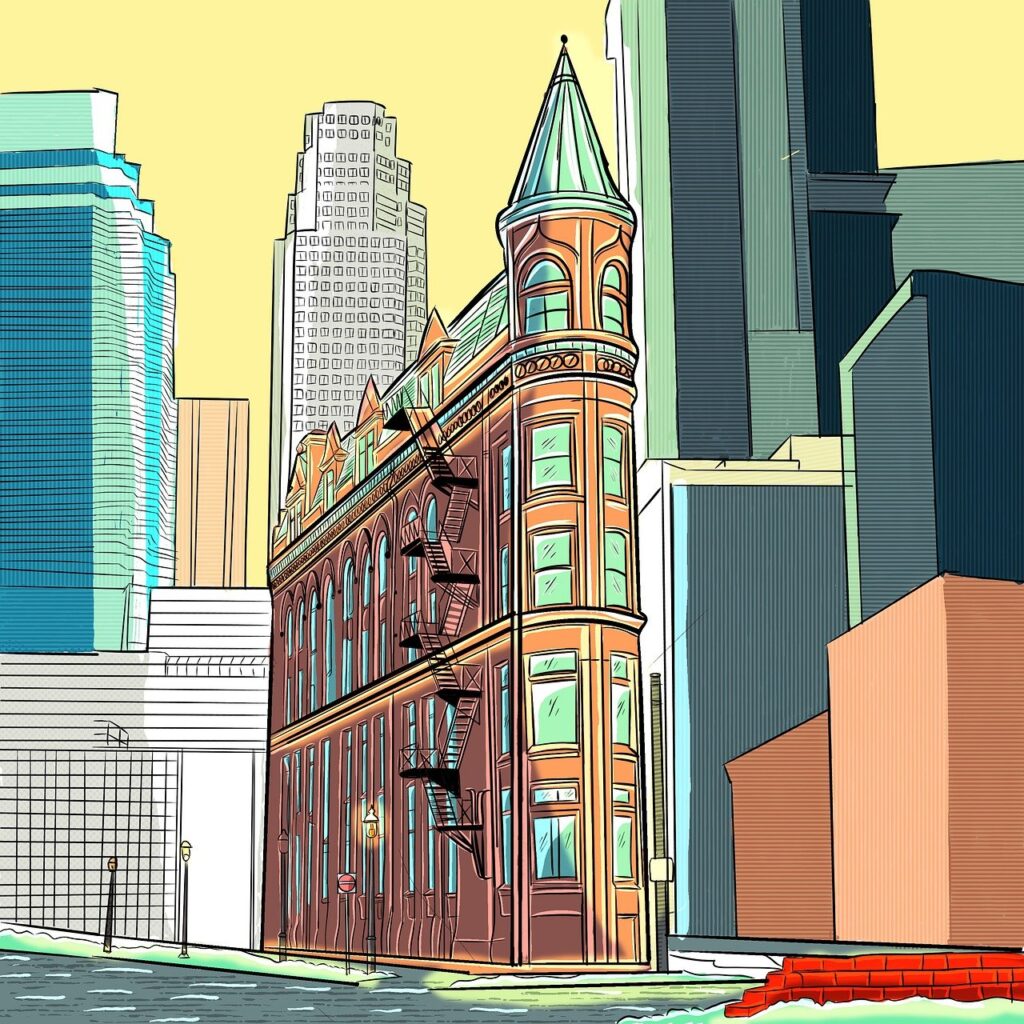
The strains on this picture run in each route, some parallel and others perpendicular to one another. They’re additionally used so as to add particulars to the buildings and particular person bricks to the wall.
3. Form
When strains be a part of up and enclose an space, they type a form. Shapes are two-dimensional and may vary from easy natural shapes to 1’s extra complicated, like geometric shapes.
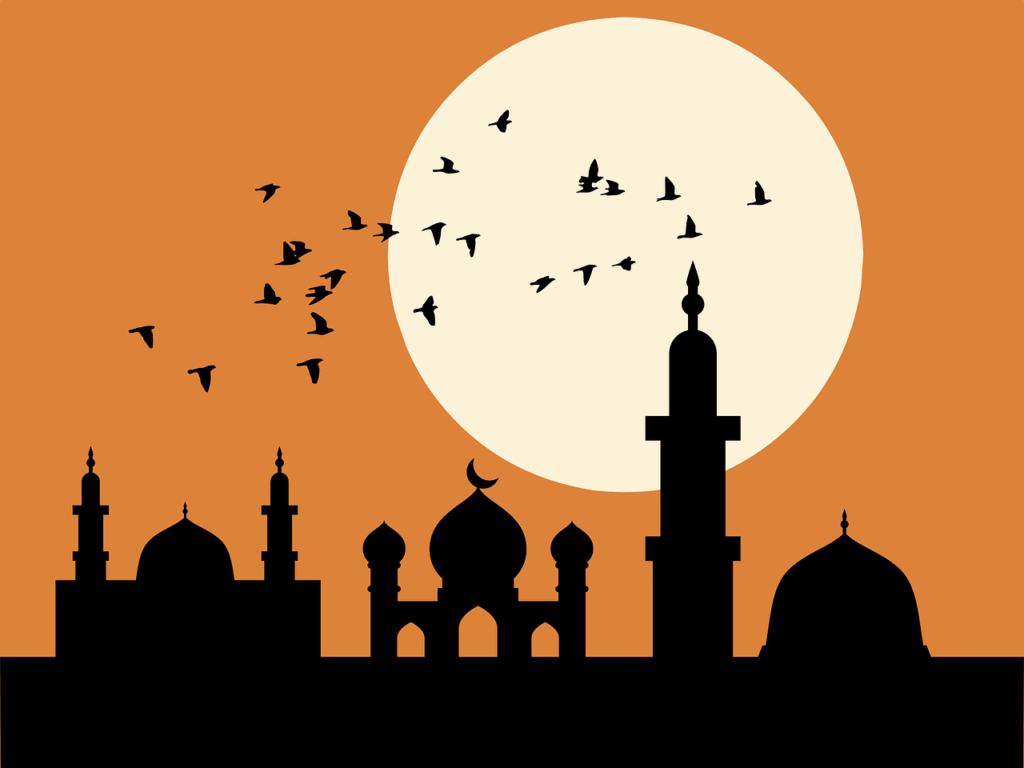
The picture above is generally made up of shapes – from the massive circle depicting the solar to the birds and the silhouette-like buildings.
Though a lot of the shapes listed here are symmetrical, we will nonetheless see some asymmetrical shapes, such because the birds, however are nonetheless classed as shapes.
4. Type
Types are shapes that turn into three-dimensional.
Type provides depth and makes sure issues pop off the web page. It may possibly rework a circle right into a sphere or a sq. right into a dice.
Utilizing types makes art work and designs extra real looking.

This picture is a good instance of type as a result of we will nonetheless see that it is made up of shapes; just some have shadows and texture, which provides them type.
5. Colour
Colour supplies probably the most psychological side of design, because it’s how most people see actuality. In design, shade tells a narrative, units the temper, and provides character and persona.
Listed below are just some traits that make up shade:
- Hue: Hue refers back to the dominant shade class, reminiscent of pink, orange, yellow, inexperienced, blue, and violet.
- Saturation: Saturation refers to a shade’s vividness. Extremely saturated colours seem vivid and intense, whereas desaturated colours seem pale or washed out.
- Brightness: Often known as worth (extra on this subsequent), brightness refers to how mild or darkish a shade seems. Brilliant colours are brighter, whereas darkish colours are low in brightness.

This picture of a robotic would inform a very totally different story if the colours have been totally different.
As an illustration, if the flowers have been pale and turning brown and the robotic was uninteresting and rusted. However as an alternative, the brilliant colours assist paint a scene that’s harmless and welcoming.
6. Worth
Often known as brightness, worth determines how mild or darkish colours are. It creates depth and temper by displaying how mild and shadow fall on objects.
When you’ve ever used Instagram to reinforce a picture, you may have seen the spotlight and shadow choices. These mean you can brighten or darken sure areas of a picture so as to add extra character.

On this picture, worth units the temper of a moist and dreary scene. The darkness of the bushes and shadows on the tractor emphasize a darkish and mysterious environment.
7. Texture
Texture refers back to the bodily or visible floor of the design or art work. It may be tough, clean, exhausting, or comfortable to the contact or just seem that means. It makes issues look tangible and provides a stage of realism.
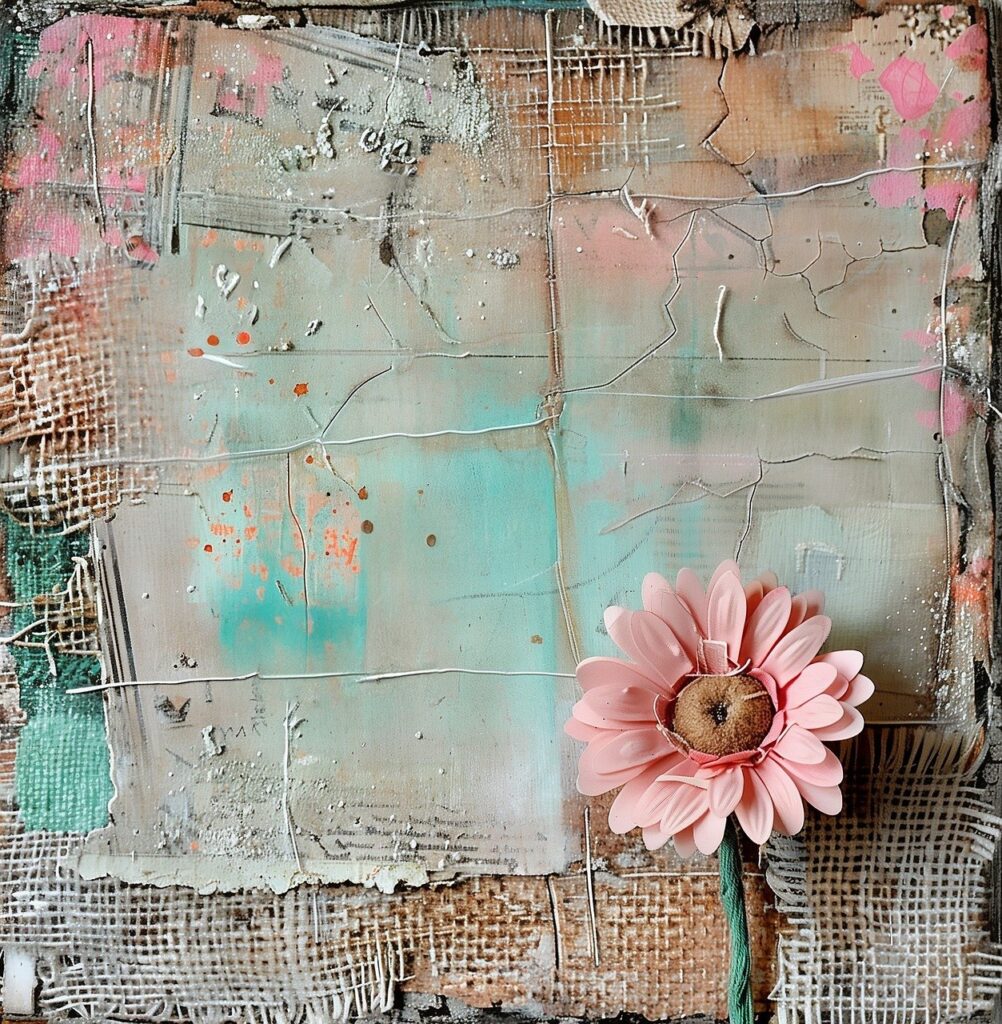
This portray represents texture utilizing meshed cloth, thick paint with broad brush strokes, and a flower that appears prefer it stands out from the canvas.
8. Adverse House
Often known as “white area,” this design aspect makes use of area as a part of the design. It may possibly additionally use the opposite components to create the phantasm of added info, which methods the attention into considering one thing is there.
Adverse area is an enormous part in net and graphic design, creating a sense of minimalism and ease.
It supplies respiration room between different design components to spotlight spaciousness.
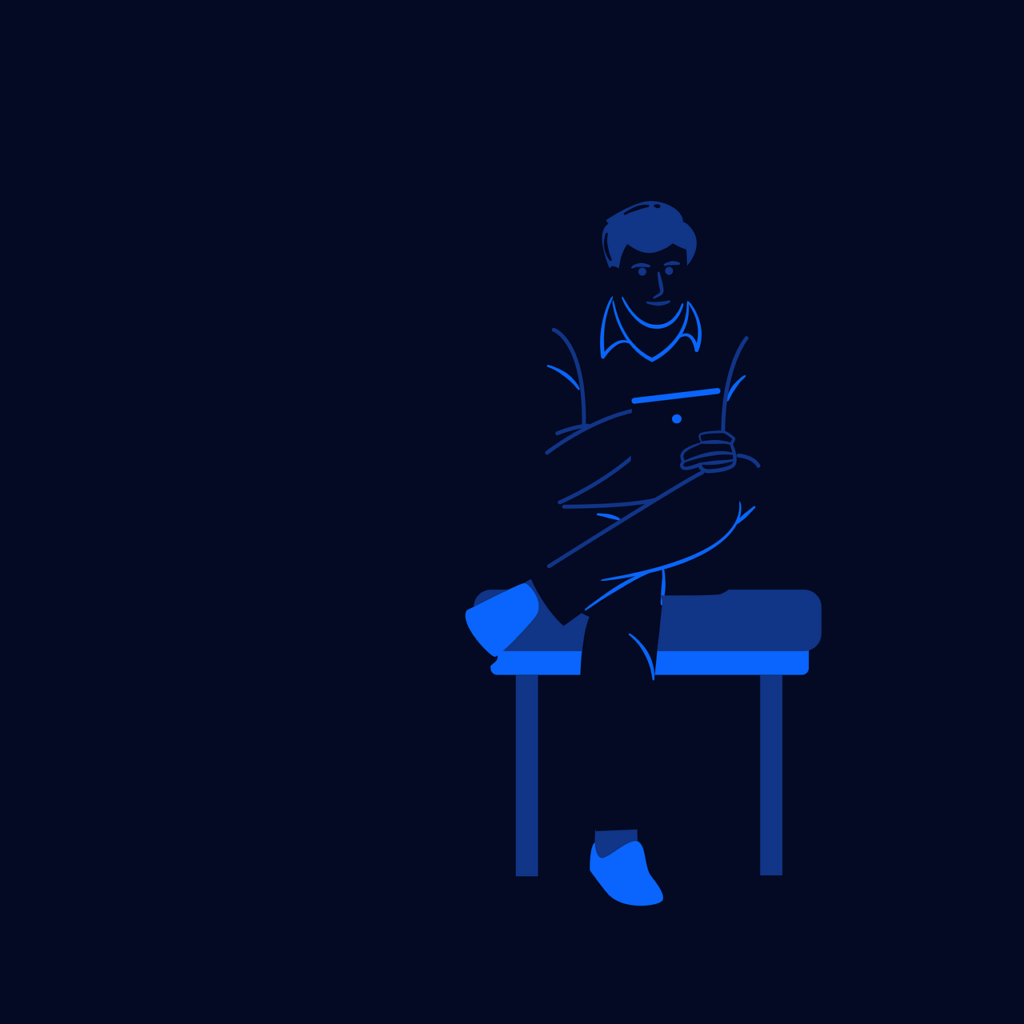
This image cleverly makes use of adverse area to stipulate the individual’s physique. Though there’s nothing there, we will make up the place his legs and physique are primarily based on the weather round him.
Rules of Design
Design ideas are tips that dictate methods to use the weather successfully. They assist designers seize the essence and persona of the topic in aesthetically pleasing methods.
These are the ideas of design to reinforce your artistic genius.
9. Distinction
Distinction creates definitions and emphasizes totally different components. It may possibly spotlight variations by means of shut affiliation or make issues stand out in juxtaposition.
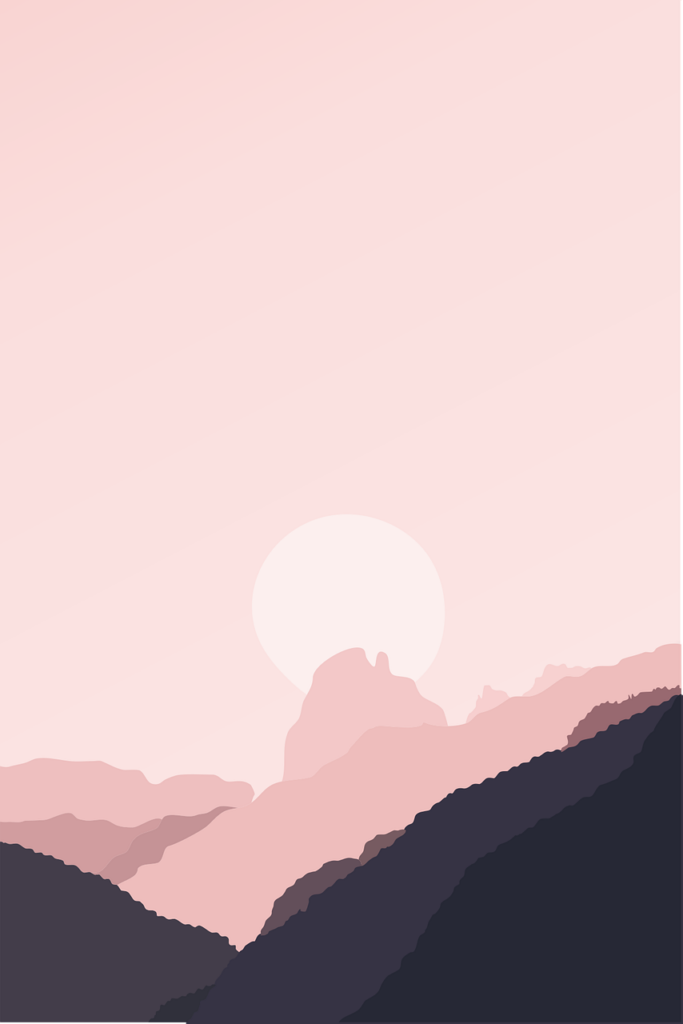
On this simplistic but elegant design, a distinction in colours provides depth of discipline and distance between objects.
10. Steadiness
Steadiness ensures your design is not lopsided, the place there’s extra happening in sure areas than others.
It is all about weight and symmetry. Visible weight ensures issues are evenly distributed, like this picture of a seaside with water and bushes. There’s sufficient stability all through, because of the clouds and reflection within the water. But, nonetheless provides some selection.
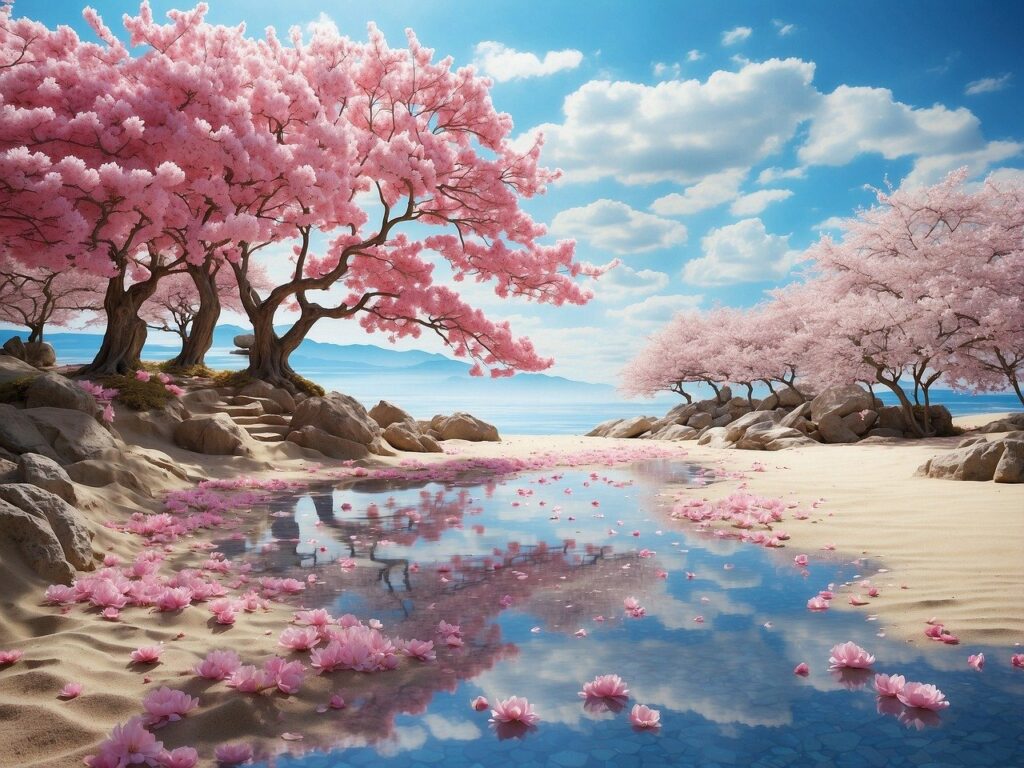
Symmetry, then again, is a extra purposeful design wherein all the pieces is even—vertically, horizontally, or each.
This portray of those flowers is an ideal instance of symmetrical stability, the place all the pieces is a mirror reflection from left to proper.
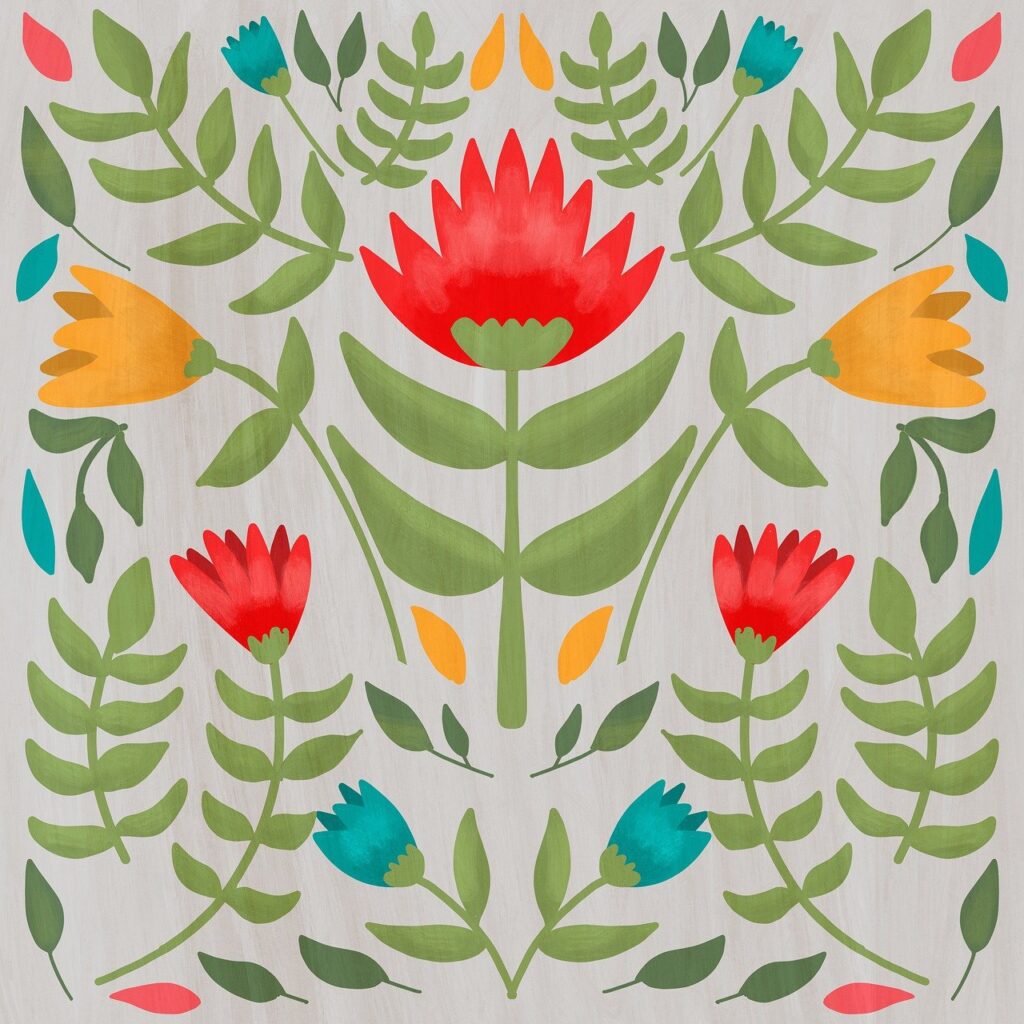
11. Emphasis
Emphasis is the place you utilize components to make issues stand out. Colour, worth, and texture are just some methods to realize this, but additionally ideas reminiscent of distinction motion and proportion.
Emphasis can be used to create a visible hierarchy in design. That is the place sure components information the viewer’s eye by means of a deliberate sequence of components. This may be seen generally in net design and print.
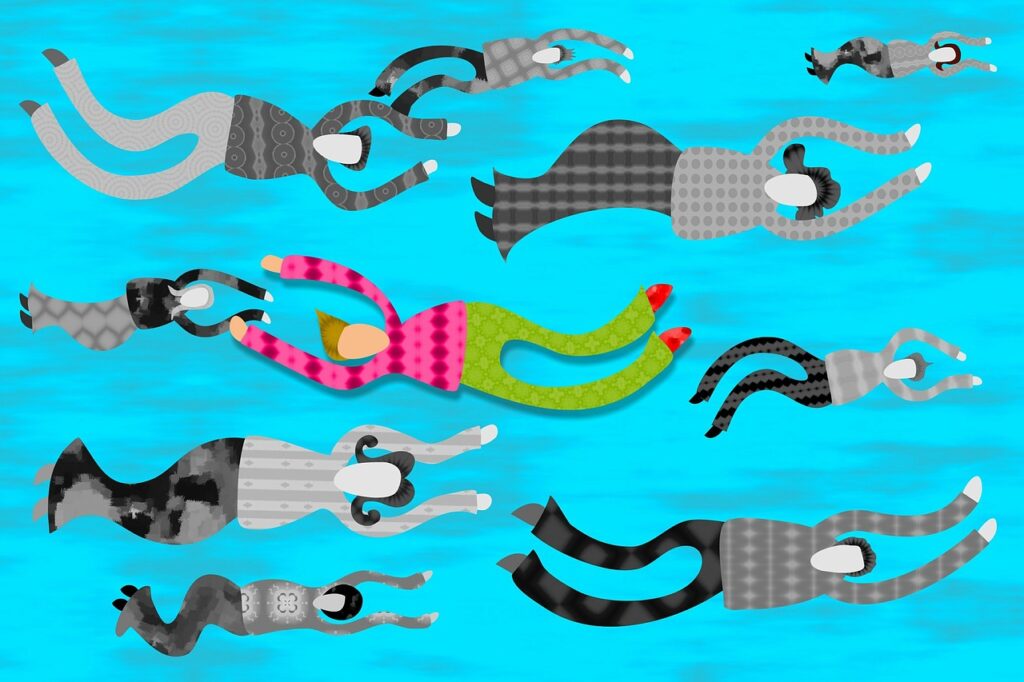
This picture creates emphasis in a number of methods. It makes use of route to distinguish the characters from those that stand out. Sample additionally helps differentiate issues, and shade and distinction make issues stand out and mix in.
12. Motion
Motion is just like the little brother of emphasis. The place emphasis attracts the viewer’s consideration to particular components in an apparent means, motion is extra refined.
Often known as route, motion makes use of components to steer the eyes from one location to a different.
It creates a visible circulate all through the design in a clean however intentional means.
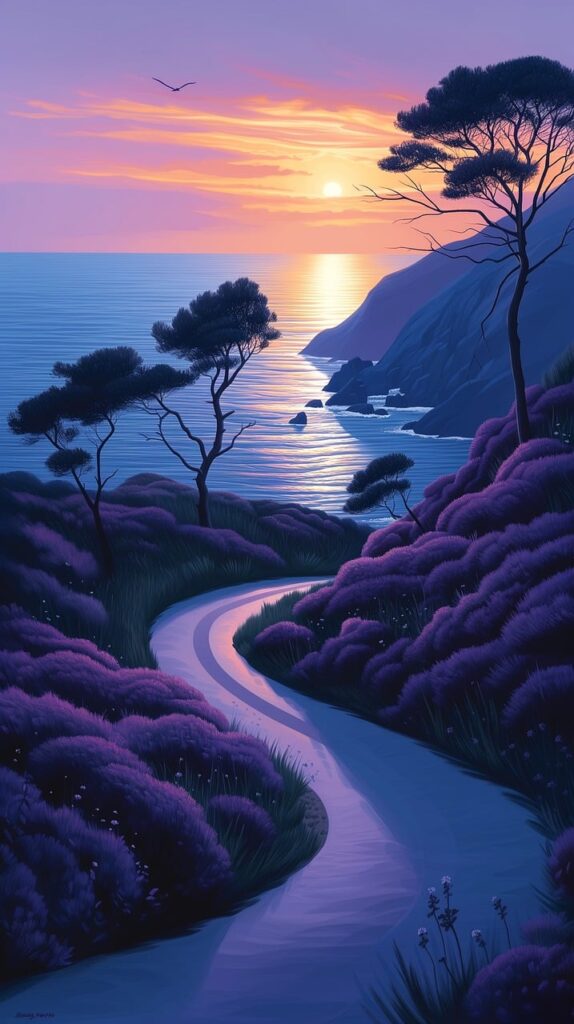
Here is an awesome instance of motion at work. The route of the street bending across the mountains within the distance leads the attention in the direction of the sundown.
13. Sample
Sample makes use of a repeated association of components to create consistency and unity all through. It may possibly subtly add visible texture and depth. Patterns may be common or irregular, symmetrical or asymmetrical stability.
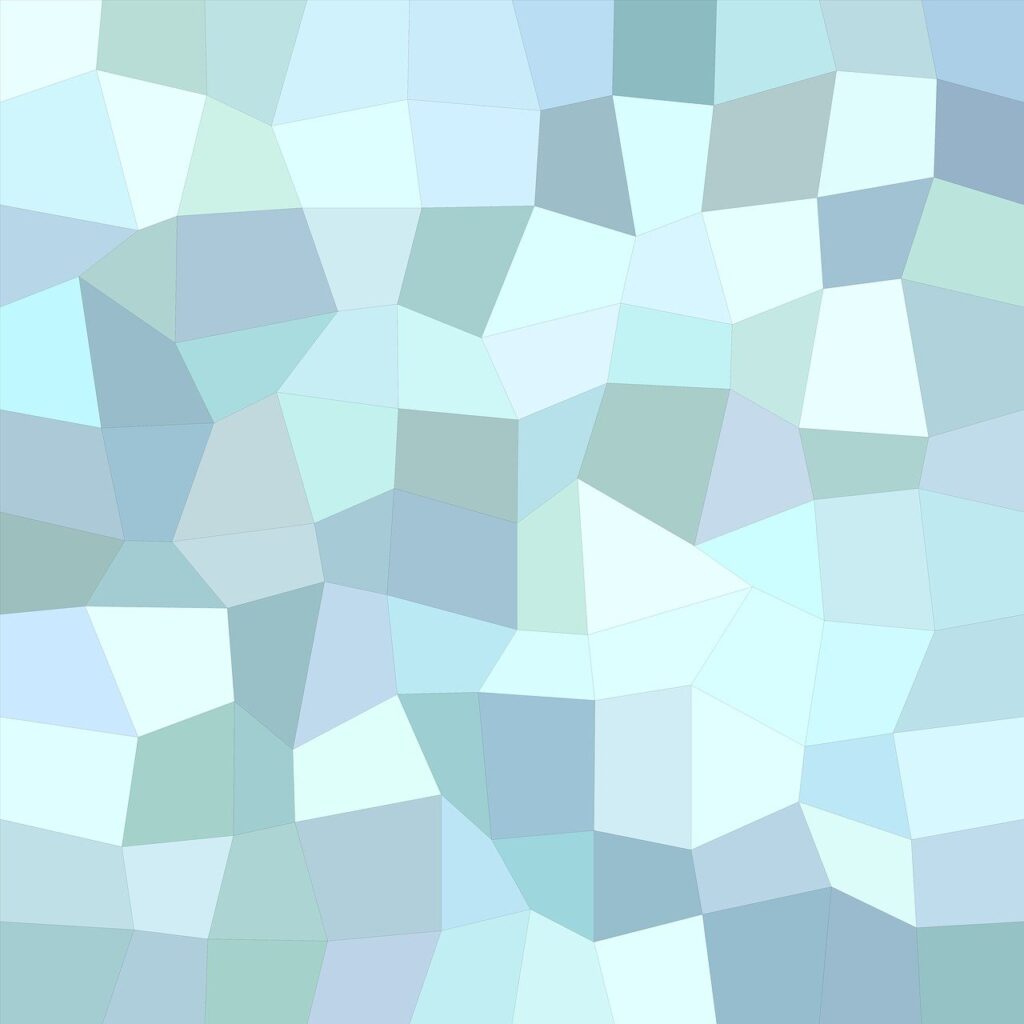
This sample is exclusive as a result of it makes use of irregular shapes that appear random. But, it nonetheless feels constant and prefer it repeats itself.
14. Repetition
The precept of repetition goes hand in hand with sample. The place patterns may be extra random, repetition is one thing. It creates consistency, particularly in net design instruments, the place issues like colours and buttons want congruence to construct belief and familiarity.
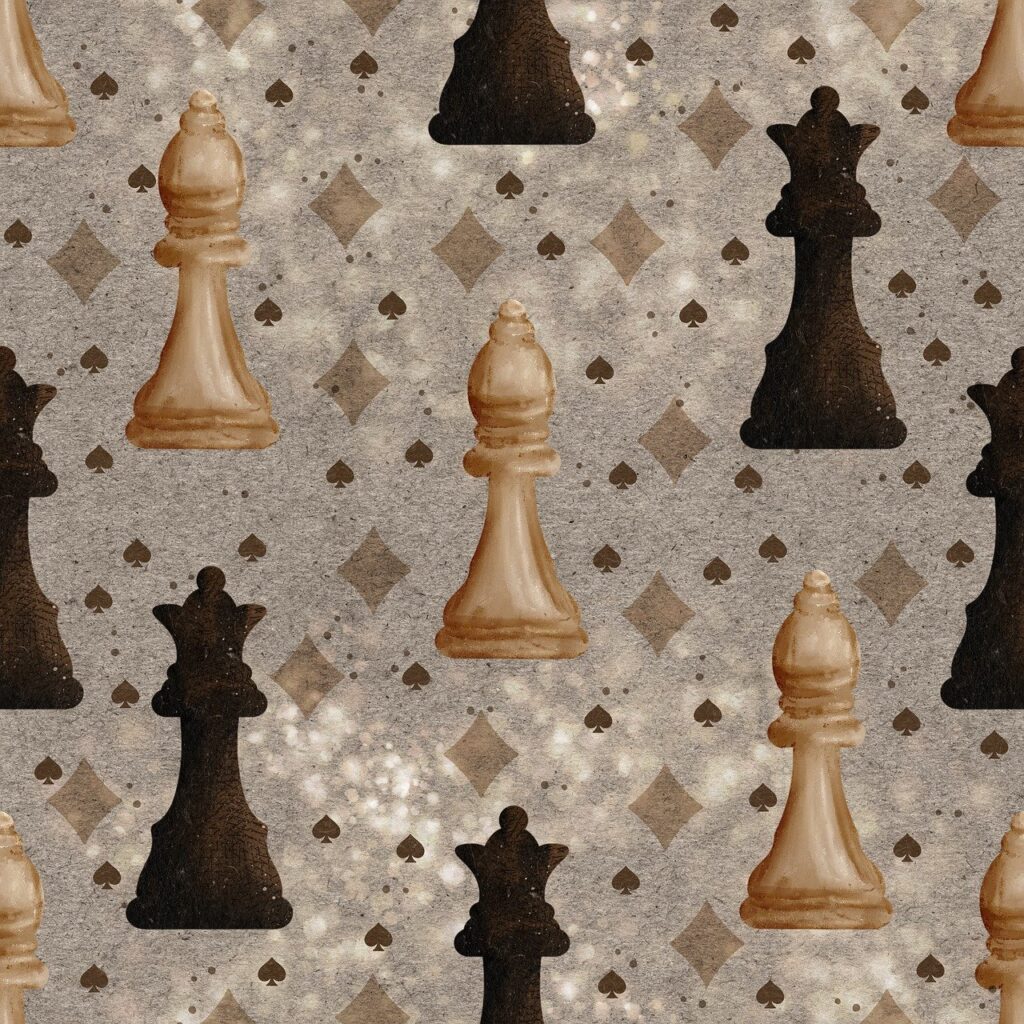
Here is a patterned design that follows the repetition precept. The structure of chess items follows the identical go well with time and again. It is symmetrical with the identical repeating sample within the background.
15. Rhythm
Rhythm is sort of a mixture of sample, motion, and repetition. It creates a visible tempo that’s constant and systematic. Picasso’s work used numerous rhythm, and different artists with a definite model or really feel are fairly rhythmic.
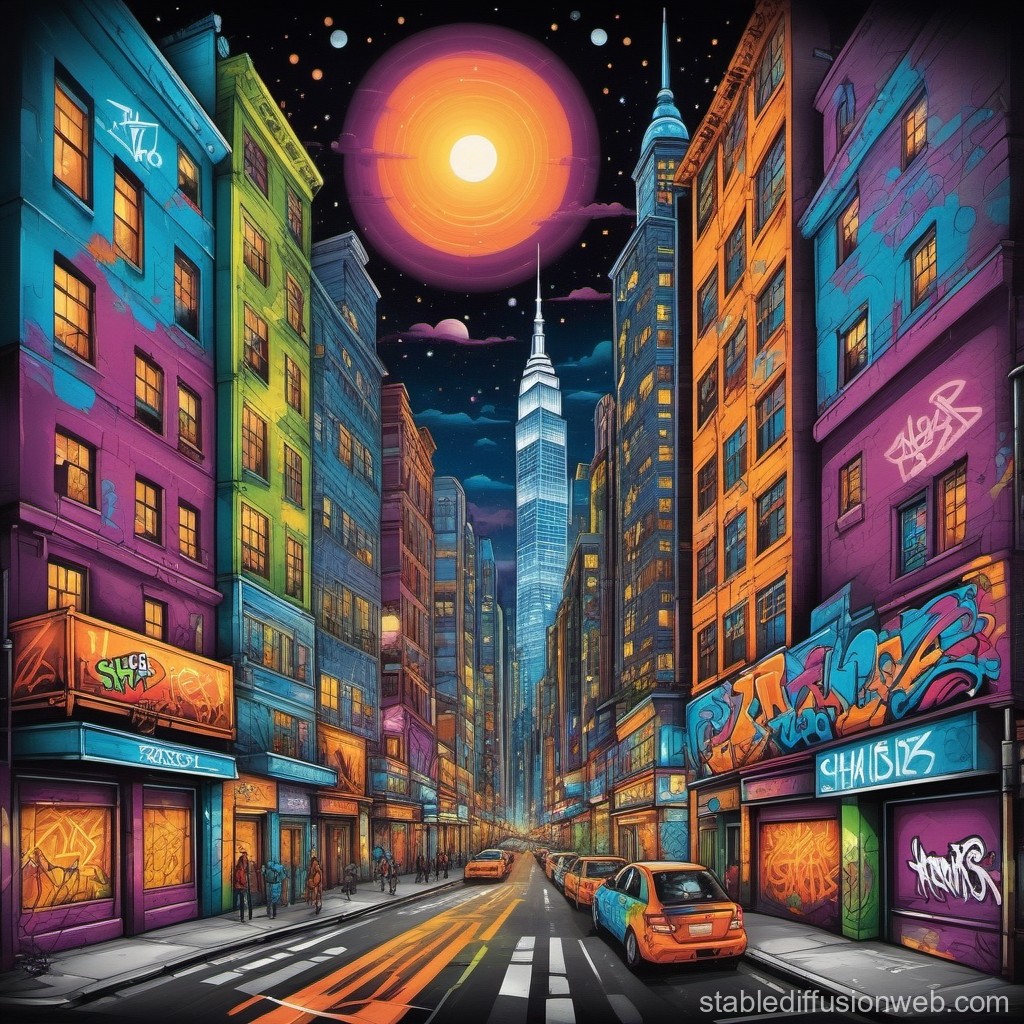
This image of an evening-lit metropolis avenue encapsulates rhythm completely. The digital design feels full of life, as if dancing or vibing to its digital music.
16. Proportion
Proportion refers back to the relative measurement and scale of components within the design. It is important for making issues look three-dimensional and in addition provides route and hierarchy.
Proportion provides order and perspective, making a relationship between components.
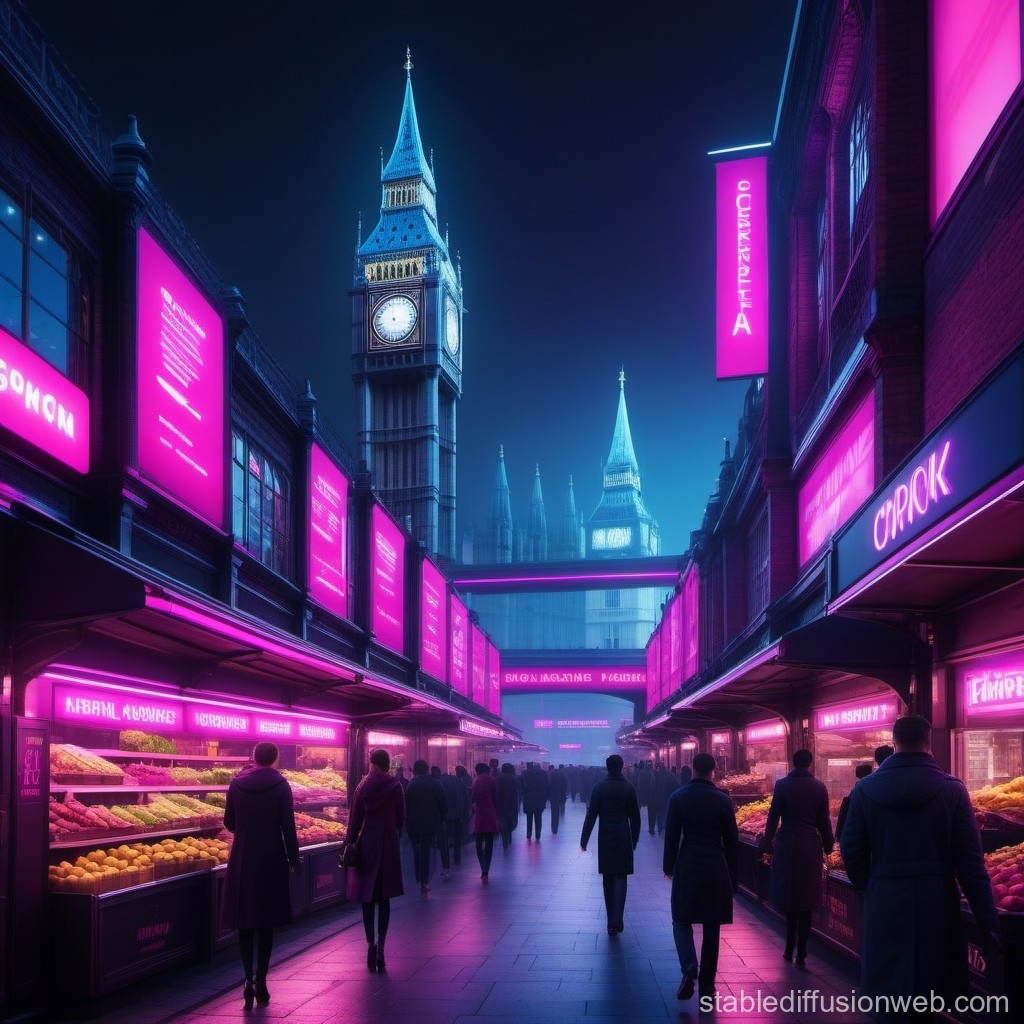
This picture makes use of numerous proportion and scale to emphasise the totally different sizes of components. It offers a way of readability to the dimensions of Large Ben within the distance to the market stalls which might be nearer.
17. Selection
Selection mixes varied components and ideas so as to add complexity but visually interesting designs. It creates curiosity and element in photos and art work to have interaction the viewers.
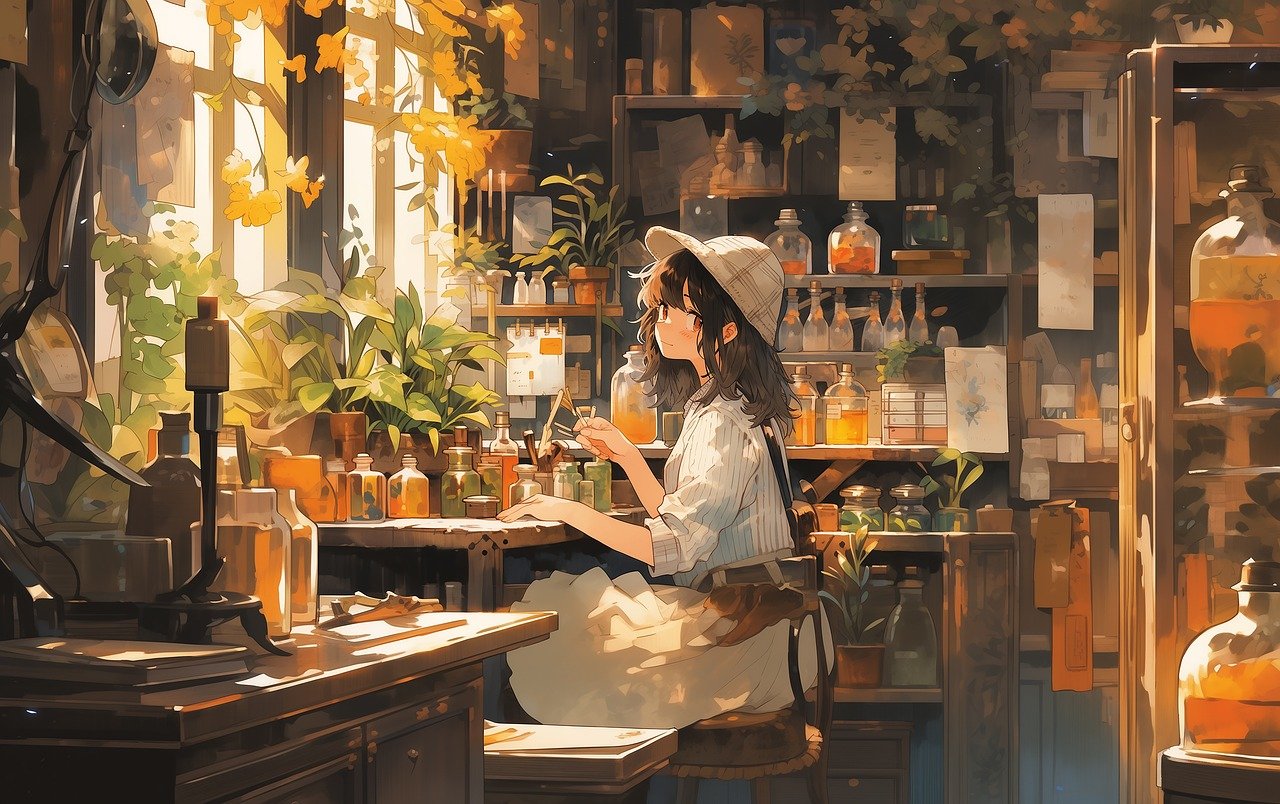
This lovely portray feels nice to the viewer’s eye but has a lot happening. It brings collectively strains, shapes, types, values, and most of the ideas we have already mentioned.
This additionally brings us to the final design precept, which is unity. Though this picture has numerous selection, it has an general harmonious side, creating a way of unity.
18. Unity
Unity is the final word accomplishment in visible design. It is when each design aspect and precept comes collectively as one, creating harmonious circulate and tranquility. It additionally types a way of completion and wholeness.
Unity can even reveal symbolism to the viewer, making a subjective expertise that’s distinctive to the viewer.
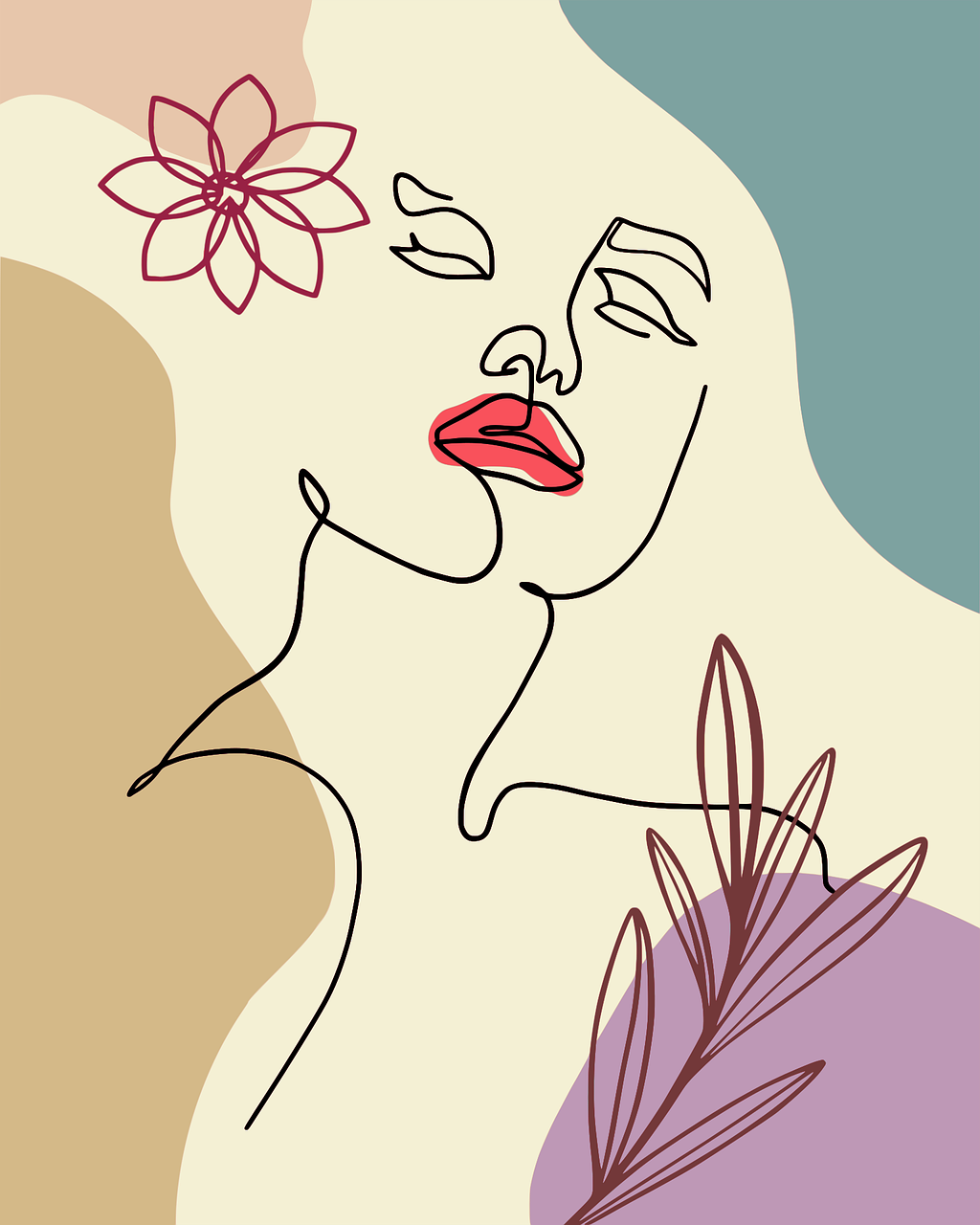
This line drawing is a good instance of unity at work. The simplicity of the shapes blends completely collectively and types a completion of objects that are not there however are perceived by the attention.
Components and Rules of Design in Conclusion
Studying the weather and ideas of design is crucial to changing into an distinctive artist or designer.
To summarize, each piece of labor makes use of level, line, form, type, and shade components. These are the constructing blocks that type the visuals and construction.
The ideas embrace distinction, stability, sample, selection, and unity. These tips use components to inform a narrative or environment and assist mix the weather successfully.
Realizing these components and ideas will enable you see past what’s tangible and produce extra skilled designs.


